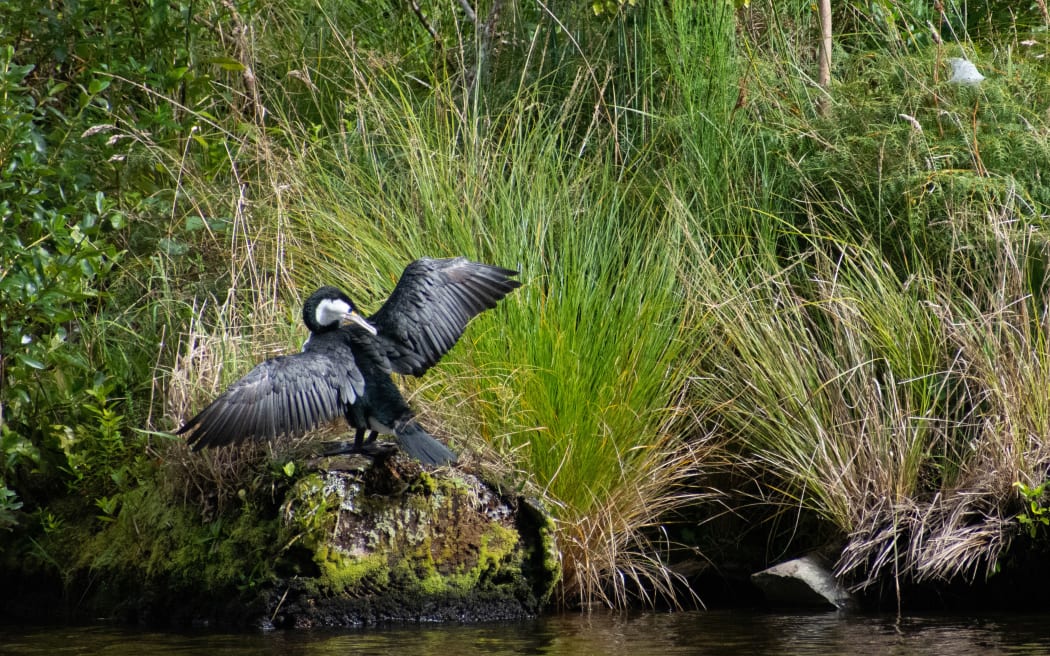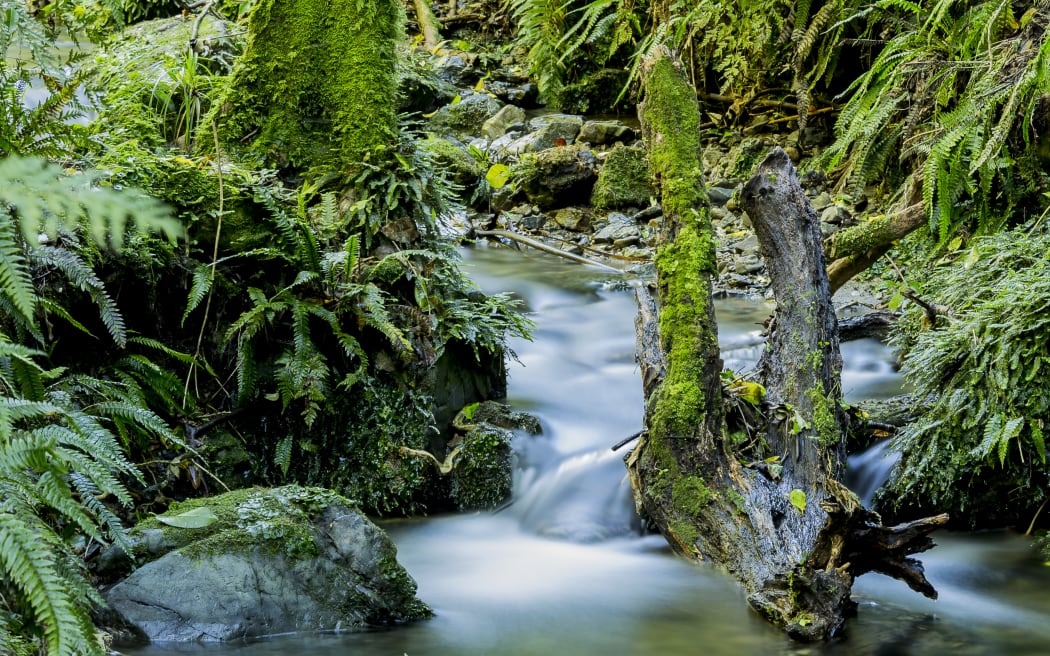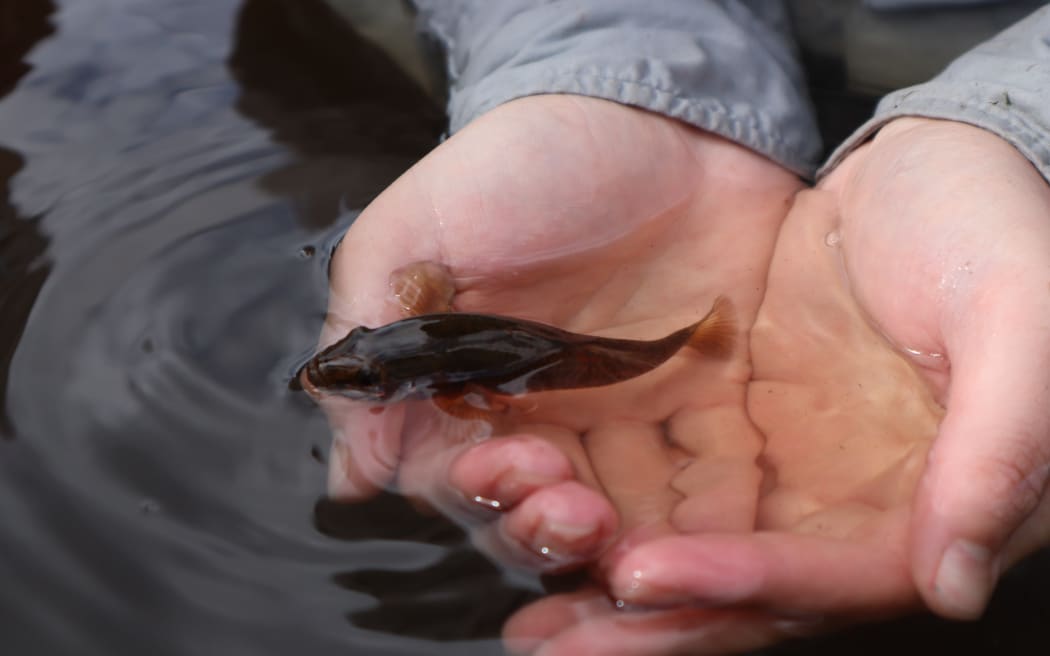The native birds are loud and proud at Te Māra-a-Tāne, Zealandia.
They flit amongst the canopy, call from the branches, preen on their perches, and even stroll across the paths.
But today we look past the manu, and instead focus on the humble freshwater fauna living their quiet lives amongst their boisterous feathered brethren.

Kāruhiruhi pied shags are one species that utilises the freshwater environment at Zealandia. Photo: Loralee Hyde / Zealandia
Follow Our Changing World on Apple Podcasts, Spotify, Stitcher, iHeartRADIO, Google Podcasts, RadioPublic or wherever you listen to your podcasts
Most of Zealandia’s freshwater areas are in fact manmade. The Karori upper and lower dams, completed in 1908 and 1878, were in use as drinking water reservoirs until the 1990s, when they were decommissioned due to earthquake risk.
Now part of the fenced ecosanctuary, the team at Zealandia have taken on the task of restoring some of the native wildlife that once would have been present in this catchment.

Zealandia's freshwater catchment is "absolutely incredible," says CEO Dr Danielle Shanahan. Photo: Janice McKenna / Zealandia
The Kaiwharawhara stream is born at the top of the sanctuary, collects in the dammed upper reservoir, feeds down through a man-made wetland area to the lower reservoir and then winds its way through the western suburbs and down the Ngaio Gorge, finishing its journey at Wellington Harbour beside the ferry terminal. So, an incredibly modified, urban landscape.
To restore this valley to a hint of its former glory will take a lot of work. But CEO of Zealandia, Dr Danielle Shanahan, remains undaunted: “This is a 100-year vision of restoring the mouri or lifeforce of this absolutely incredible catchment.” This collaborative project – Kia mouriora te Kaiwharawhara, Sanctuary to sea – will involve dealing with historic landfills within the catchment, providing fish passage for native ika to be able to move upstream, and advocating to ensure future developments are freshwater friendly.

The translocation of 160 toitoi is thought to be the first in modern times. Photo: Zealandia
For Danielle, it must start at home. She and the Zealandia team have been working hard to restore the upper reservoir (now called Roto Māhanga), the lower reservoir (referred to as Roto Kawau after the shags that hang out there), and the wetland area in between.
The most recent addition is toitoi, the common bully, to Roto Māhanga. These are cute speckled brown fish that are an important part of another freshwater resident’s lifecycle. Kākahi, or freshwater mussels, sneeze out their larvae which then attach to the gills of fish like toitoi in order to disperse.
Listen as Claire and Danielle do their best to stay on task despite bird (and mistletoe) distractions!
To learn more:
You want the back story to mistletoe and kākahi? Our Changing World has covered it!
- Listen to ‘Mistletoe rescue mission’ – this 2018 episode tells the story of the return of mistletoe into the ecosanctuary
- In ‘Mussels on the move’ Alison Ballance tagged along with the group gathering kākahi for that first translocation into Te Māra-a-Tāne in 2018.
Claire Concannon visited while the toitoi were still in quarantine, but they have since been released into the sanctuary, on 12 May. You can read more about that here
Look, we do also love birds, and Our Changing World has covered the manu of Zealandia many times. Listen to stories about smart kākā, native bird winners and losers over time, and how wider predator free efforts have helped bring birds back to the city.


